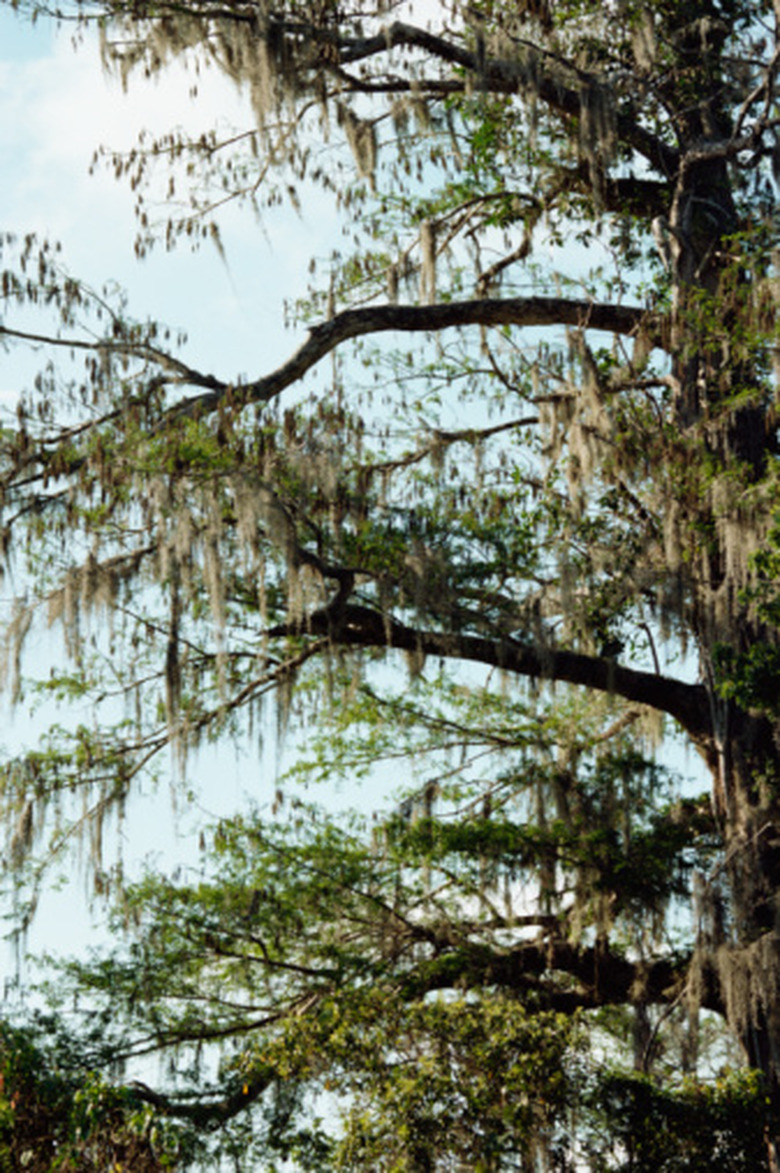Pond Cypress Vs. Bald Cypress
Native to the lowland coastal plain of the extreme southeastern United States, both the pond and bald cypress are winter deciduous conifers with feathery, soft needles. When grown in fertile soils that are abundantly wet, the trees develop pointy or rounded "knees" or root-like protrusions from the soil surface. Gardeners in U.S. Department of Agriculture plant hardiness zones 5 through 11 may successfully grow both tree species.
Nomenclature Clarification
Nomenclature Clarification
Originally, taxonomists lumped all cypress trees, known as bald cypresses, native to the American Southeast as Taxodium distichum. However, the tree regarded as the pond cypress was considered as a natural variety, noted as Taxodium distichum var. imbricatum. A few taxonomists continue to consider the pond cypress a type of bald cypress, while today most others regard the pond cypress its own species, Taxodium ascendens. The Flora of North America states that the scientific name Taxodium distichum var. nutans has been improperly used for the pond cypress.
Origins
Origins
The bald cypress hails from a much broader natural range than the pond cypress. Bald cypress grows in the swamps and seasonally flooded lowlands around rivers and lakes. Its ranges extends southeast of a line from the southern Delmarva Peninsula south to Dothan, Alabama, and then in a wide stretch from the conjunction of the Ohio and Mississippi Rivers south to Dothan and east-central Texas. The pond cypress only occurs from the Delmarva Peninsula to Dothan and westward only to the Mississippi River and southeastward to the ocean and across the Florida Peninsula.
Growing Considerations
Growing Considerations
Both bald and pond cypresses appreciate a moist soil. Bald cypresses tolerate upland, average garden conditions as well as the seasonally flooded soils in swamps or along ponds. Bald cypresses are drought-tolerant trees. According to the U.S. Forest Service, bald cypress trees grow best in fertile soils with a pH not below 5.5. Conversely, pond cypresses persist only in moist to wet soils that are not seasonally flooded. They do tolerate moderate droughts in garden settings. Pond cypress trees also grow poorly in soils that are above 6.8 in pH. These trees tend to prosper in less fertile sandy soils compared with bald cypresses.
Features
Features
It is extremely difficult to distinguish bald cypress from pond cypress trees. Typically, bald cypress trees potentially grow 70 to 130 feet tall and 20 to 30 feet wide. A tree's silhouette is an upright rounded oval with wider base. Pond cypress trees tend to mature only 40 to 80 feet tall and no more than 20 feet wide. Pond cypresses form often is narrower and more tapering, but not always. The root knees of bald cypresses are much more pointed than any that may occur on pond cypress trees. Upper branches of pond cypresses are more upward-angled than the more horizontally branched bald cypresses. Lastly, a common feature used to distinguish the two species is that pond cypresses needles are more scale-like and lie more flat or angled toward the midrib vein. Unfortunately, this needle feature isn't always obvious so the pond cypress is initially identified as a bald cypress.
